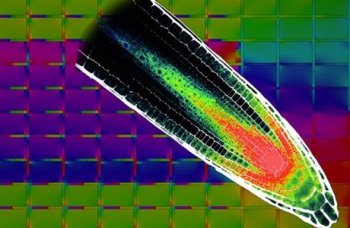
“For the first time, we begin to understand how those quick responses can combine with the processes that preserve the structure of the plant, in an interplay between the hormone auxin and regulatory proteins,” says Professor Ben Scheres of Wageningen University.
The breakthrough was published in the prestigious journal, Nature.
He suggests that the plant hormone, auxin, is a ‘jack-of-all-trades’. Tt has a multitude of tasks in the plant. “It influences the development of stem cells into differentiated tissues, but also plays a role in rapid responses to changes in the environment. How can a signal molecule control such very different processes? That is the topic of our research”, explains Scheres.
He has been studying plant growth regulation for twenty years, initially at Utrecht University, and now at the Plant Developmental Biology Group of Wageningen University. One of his postdoctoral researchers has continued the published work as group leader in Finland.
Regulatory proteins
Besides auxin, four regulatory proteins (transcription factors) – under the collective name PLETHORA (PLT) – are involved.
These proteins turn genes on or off. Auxin itself appears to control the rapid responses of the plant directly. Within only a few minutes, a root changes direction to follow a change in the direction of gravity. The regulatory proteins in turn affect the location and growth of the zones in which cell division, cell elongation and differentiation take place. These processes are much slower.
The location and growth of the zones depends on the gradient of the PLTs. “Previously, we thought that the PLT gradient was linked directly to the auxin gradient. But this does not explain the stable formation of structures under rapidly changing conditions. Many feedback loops and dependencies appear to be involved in these processes. The growth affects the gradients, and the gradients in turn affect the growth. We already understood many components, but now our understanding of the complete picture is much better”, says Scheres.
The study is a good example of what systems biology can do, using interplay between simulations within mathematical models and focused experiments.
Fundamental investment
This involves fundamental research with a clear societal aspect, Scheres explains. “We are faced with the challenge of providing more food for the world. We not only need fast solutions, but investment in fundamental research is also required. You can take new directions only a through better understanding of growth and development, the most fundamental processes in the plant. With this understanding, you will ultimately have better control in breeding or cultivation.” He cites an example: “The root has only a small zone in which it can make lateral roots. If you understand the switches for this zone, then you can change the architecture. In this way you can perhaps develop a plant with a better and more productive root system.”
Source: Wageningen UR



 Classifieds
Classifieds



